According to the ancient principle of feng shui, the kitchen is the heart of your home and indicates health, wealth, nourishment, and prosperity. Inequality and obstacles in the flow of energy through the kitchen can affect deeply every member of your family and all facets of your life. If you wish to cultivate positive energy vibes and to keep balance in flowing energy, you just need to follow the principles of Feng Shui as regarded to houseplants. Uncover the 9 lucky plants you should have in your kitchen today!
The role of plants in the kitchen according to Feng Shui
The kitchen is an important room of your house that mostly use heat and sometimes flames during cooking which represent the fire element in Feng Shui. Plants can assist you to maintain fire elements inside your home but avoid putting a colossal number of plants in kitchen space because it may cause creating an imbalance in your home’s energy.
The kitchen is a room where you do something with a great purpose so, you should utilize every space of the kitchen for plants with a thoughtful or meaningful reason for amazing energy flow. Feng shui is basically an art that condescends to keep lucky plants in a proper place in the kitchen.
Here you’ll explore 9 lucky plants for your kitchen which boost positive energy and bring wealth and prosperity to your life.
Citrus Tree
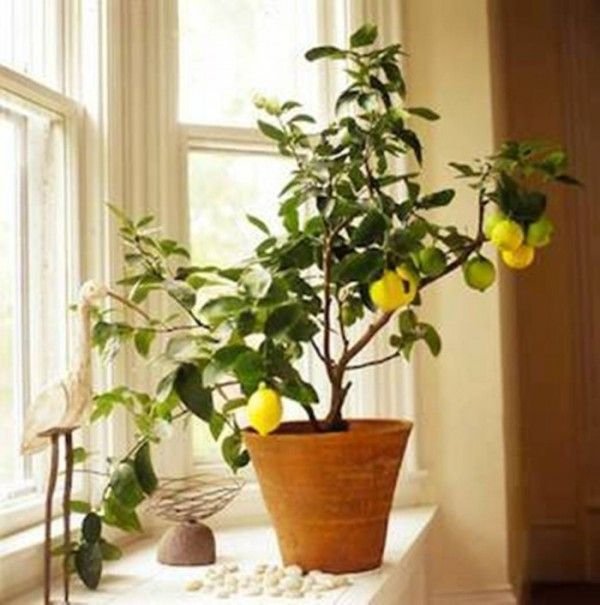
Citrus trees are beautiful and fragrant trees that nourish you and your family with tangy and round citrus fruits. Round and gold citrus fruits resembling coins for wealth and good fortune. The citrus tree is a good source of abundance, wealth, prosperity, and health. It is not only popular for wealth, but it can also brighten up your kitchen space.
Caring tips and uses of Citrus Tree
Citrus trees are fruit trees but all fruit trees are not Citrus trees. Citrus Tree loves to thrive in bright filtered sunlight so, keep it in front of the northeast window. It demands a lot of space to accommodate a growing tree. Citrus Trees are a precious gift to celebrate the Chinese Spring Festival. The more fruit your tree has, the luckier you are. Citrus fruits are rich in vitamin C and you can use them to add flavor to sauces, salad dressings, and drinks.
Money Tree | Lucky Plants
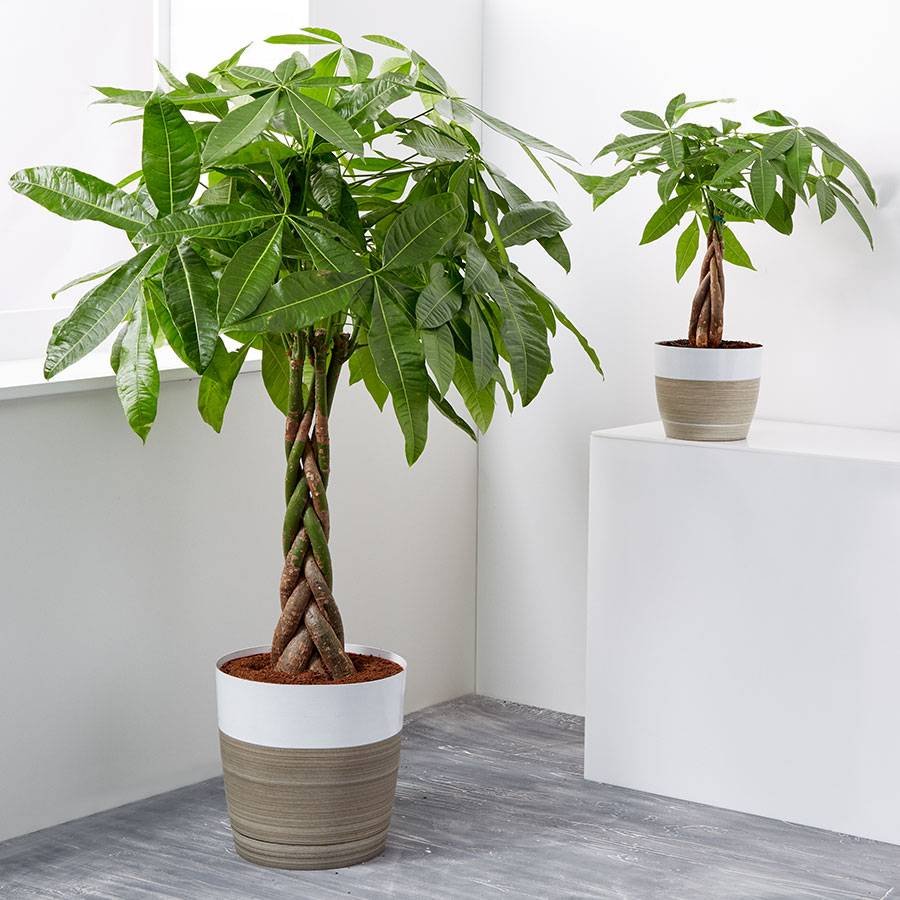
If you are stuck in financial problems, flush out your all worries and just place the money tree in the southeast corner of your kitchen. It is native to central and South America. The braided trunks of the money tree are considered to trap fortune within its folds while five leaves on each stalk represent five elements of earth, fire, water, wind, and metal in Feng Shui.
How to grow and care for your Money Tree?
Money Tree appreciates both direct and indirect light so, turn or rotate it regularly to achieve the right balance of sunlight. Too much direct sunlight can scorch the leaves of a money tree. Nutrient-rich potting soil is perfect to thrive your green friend. If you want to keep your money plant happy and satisfied, you just need to water it every one to two weeks. Let allow the soil dry before watering again. A temperature between 65 and 75 is acceptable for growing Money Tree.
Jade Plant
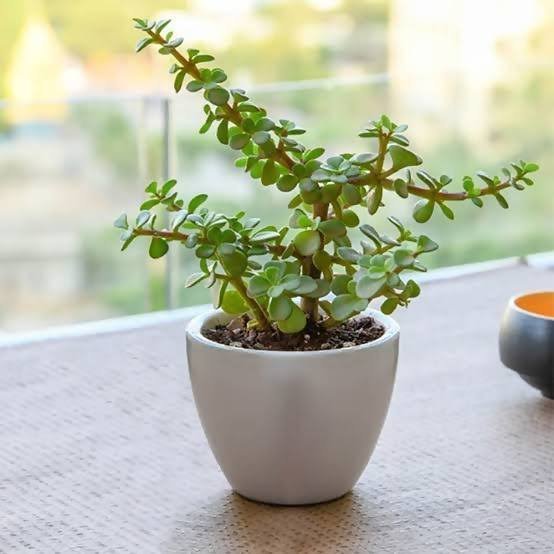
Jade Plant has tiny, round, and glossy green leaves with a splash of red near the edges which represent jade coins and jade stones. Crassula ovate is a botanical name for the jade plant. According to feng shui, it is the epitome of health, wealth, and growth. You can gift it to the owners of the business or a person who wants to start a new business for good fortune and success.
How to grow and care for your Jade plant?
Jade plant loves bright indirect light to thrive and hates cold temperature so, keep them away from the breezy window.
Jade plants don’t show satisfactory results when sitting always in moist or damp soil, so let the top 2 inches of soil dry out between watering gaps. If you notice blisters on the surface of leaves, it indicates overwatering so, stop watering in this case.
You can feed your green friend about a month after planting it.
Orchids

Orchids are colorful flowering plants and are one of the most popular lucky plants. This tropical plant is native to Asia, and Central, and South America. Orchid has three petals and three sepals that joined together. If you want a strong and healthy relationship, place an orchid in your kitchen because it can meet you with your love or dreamy partner. They emit oxygen at night which helps you to take powerful and energetic sleep.
How to grow and care for your orchids?
Orchids appreciate a lot of air around their roots instead of congested space so, keep it in terra cotta pots. A good ventilation system is a must for keeping contented your orchids. Some varieties of orchids can be picky about blooming so, be patient for getting flowers. Orchids prefer bright and strong indirect sunlight. If you notice the color of the leaves is dark green, it indicates your green friend can’t get enough light while yellowish-green or red leaves represent that plant getting an abundance of light.
You should water your thirsty green friend once a week in winter and twice a week in summer. Plump white roots are a sign that the orchid plants receive a sufficient amount of water. Wilted grey roots indicate that your plant is extremely thirsty and wants to drink water more while brown or black roots represent that your plant had received too much water.
Chamomile
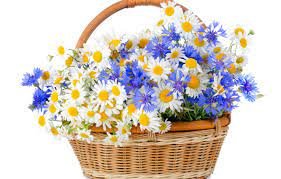
The word Chamomile is derived from the Greek word “Khamaimelon” which means small apple because the smell of the chamomile flower is very similar to an apple. According to feng shui, the flowers of Chamomile symbolize wealth and prosperity. It has the ability to attract prosperity and happiness to the heart of your home. You can keep it in the southeast corner of your kitchen to becoming your family healthy and strong.
How to use Chamomile in the kitchen?
Consuming Chamomile tea after a meal brings a layer of positive energy to your body and can relieve belly aches.
They can reduce anxiety or stress levels and dark under-eye circles. Chamomile is a versatile ingredient for all types of amazing recipes. You can add amazing flavor to jams, candies, ice cream, risotto, fish salad, melodious cream, or biscuits with Chamomile. If you want to add something interesting to your dishes, you can use Chamomile flowers to decorate your sweet or savory dishes.
Lucky bamboo

The element of fire in the kitchen represents by the number 9, so choose the arrangement of 9. If you wish for a strong and happy relationship or marriage, you can display 2 lucky bamboo stalks while 4 stalks if you want to bring prosperity and good fortune in your life. You can keep this low-maintenance plant in the southeast window of your kitchen for financial fortune. Lucky bamboo is very versatile in different designs and shapes such as swirls, hearts, and braids.
Caring and growing tips for Lucky bamboo
Lucky Bamboo loves to swim in water but can thrive in soil too because it is very flexible in nature. Lucky Bamboo prefers bright indirect sunlight to survive but it can also adjust in low light. Fill up your jar with a sufficient amount of water to wet its roots. Lucky Bamboo craves a temperature range of 65-950 F. Exclude any Chlorotic Leaves ( yellow leaves) Lucky Bamboo is poisonous for your fur babies, so make sure to keep it away from their approach.
Golden Pothos

Pothos is another lucky indoor plant that attracts wealth, positive energy, and happiness. If you don’t know much about lucky plants, then Pothos is for your kitchen. These plants come from French Polynesian islands but have naturalized in tropical forests worldwide. Pothos has dark green heart-shaped leaves with splashes of yellow. This plant can help to reduce air pollutants in your kitchen.
How to care for and grow your Pothos?
If you want to look over your Pothos throughout the day, a glass jar or vase is the best room for Pothos. Make sure to keep the roots of Pothos always underwater while leaves are above the container. You can keep it in different unique shapes of glass jars or vases such as goodwill, urban outfitters, and eBay. It looks gorgeous in a glass jar.
Change the water daily or after a couple of days otherwise, your Pothos will sick. Keep it at consistent room temperature.
Make sure to provide enough amount of nutrients because Pothos desires to absorb nutrients throughout the water.
Your Pothos requires feeding after 4 weeks, so add a drop of liquid fertilizer every 4-6 weeks.
Snake Plant

Snake plant is one of the most popular lucky plants and the best natural air purifier. It can remove volatile compounds from the air at a colossal level. The snake plant is known as the Mother-in-law’s tongue. Sansevieria Trifasciata is the scientific name of this low-maintenance plant. Their strong pointing leaves bring optimistic power and give you an aesthetic experience. Their long and upright leaves with beautiful strips and yellow edges provide a natural look to your kitchen.
Benefits of Snake Plant
It helps to ameliorate air born allergies. If you are stuck in the middle of thousands of projects, this beginner-friendly houseplant is made for you. It does not need more water, light, and attention. The appropriate place to keep them is on the windowsill of your kitchen. Snake plants can absorb echo through leaves and modify the acoustic system around the kitchen.
Peace Lily
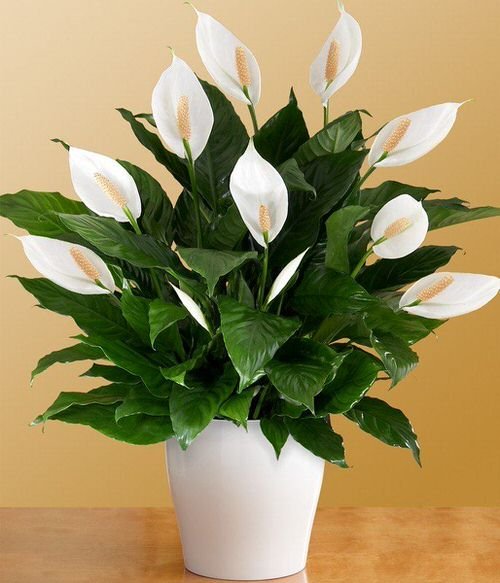
In feng shui, a peace lily is considered a fortune flower. Peace Lily has unique recognition in the world of plants for its glossy green leaves and white blooming flowers. It symbolizes goodness, immaculate humans, peace, and purity. You can make peace lilies happy and more beautiful by pooping them on the windowsill of your kitchen. Now, you can breathe in a hygienic and healthy environment.
Benefits and uses of Peace Lily
Peace Lily can smash harmful gases from the air, like formaldehyde and carbon monoxide. One thing which makes peace lily different from others is that it can eliminate mold spores from the air to achieve the highest level of purification. It is enough for cleansing your kitchen. Peace lily loves bright light and moist soil. However, it never demands a plentiful amount of water.


